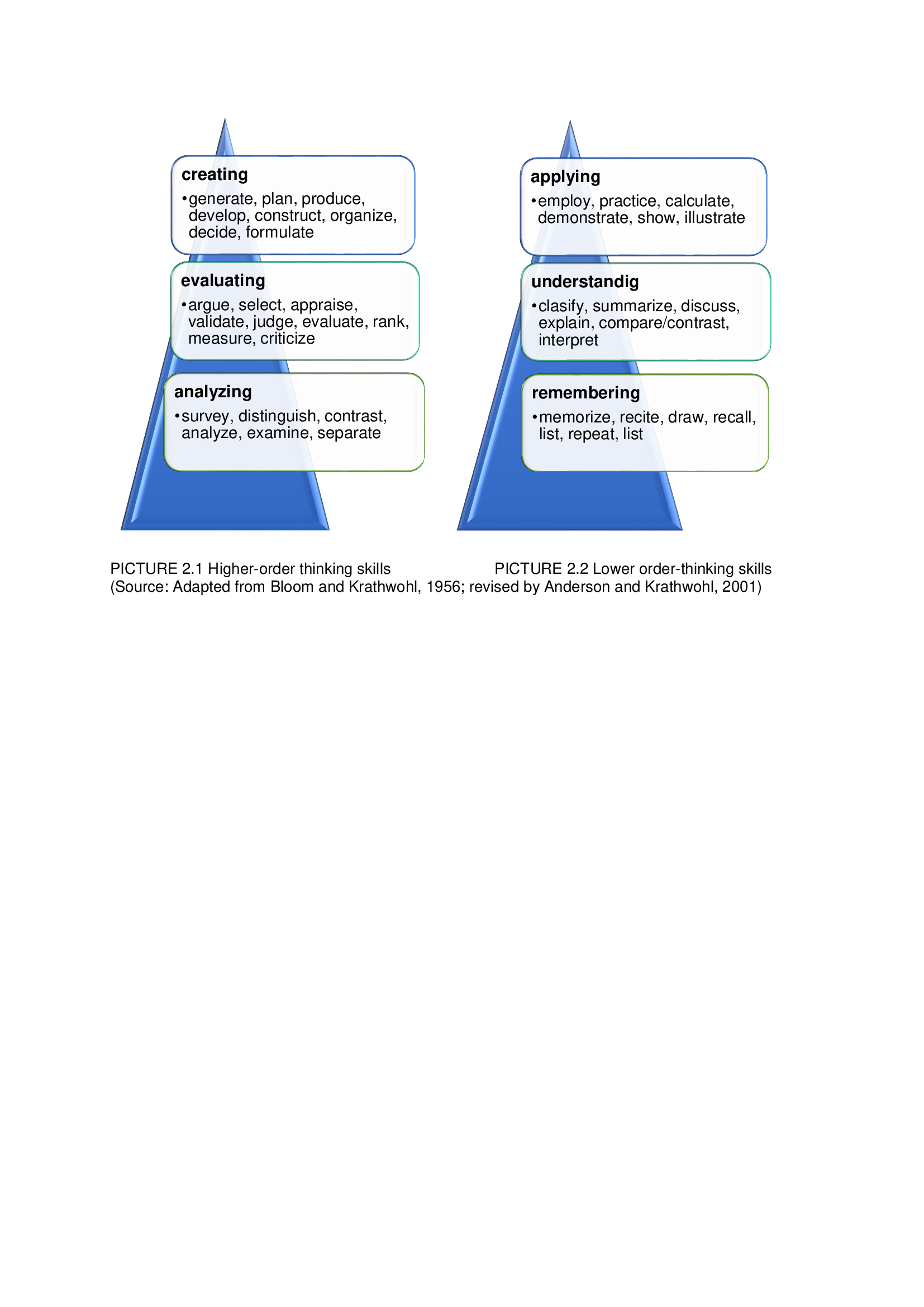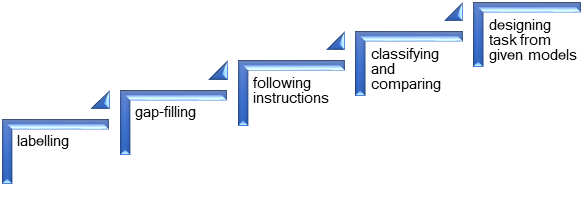Language, Cognition and Scaffolding
| Site: | Vitajte v prostredí e-learningu na Filozofickej fakulte PU |
| Course: | ELT: DASS Autonomy Development using ePortfolio |
| Book: | Language, Cognition and Scaffolding |
| Printed by: | Hosťovský používateľ |
| Date: | Tuesday, 16 December 2025, 7:35 AM |
1. Language Importance
Regarding communication or language in CLIL, two key terms are interaction, and progression in language using (Coyle, 2010). It is principal to differentiate between language using and language learning. CLIL language use/communication goes beyond the grammar system but, at the same time, does not reject the essential role of grammar and lexis. The emphasis here is on communication and immediate demands.
Language is linked with content and cognition – when learners learn through a foreign language, they reconstruct the content using related cognitive processes. Coyle emphasises that this language must be accessible to learners (2010). A language in CLIL is used as a communication tool; at the same time, the language is taught to learners. The author (2010) presented the concept of the Language Triptych, which reflected the complexity of language learning and using CLIL. This concept is also known as the 3A framework (Analyse, Add and Apply) guidance for CLIL lesson planning.
A novice CLIL teacher may formulate the following questions connected to language:
What language do they need to work with the content?
Is there any specialised vocabulary and phrases?
What kind of discussions will they engage in?
Will I need to check out key grammatical coverage of a particular tense or feature?
What about the language of tasks and classroom activities?
What about discussion and debate?
Learner-learner and learner-teacher communication should be in the target language as much as possible. It might sometimes be demanding when dealing with the complex topics of the content subject. Teachers must try to adapt their language to the learners’ level and help learners understand what is being discussed.1.1. Language Triptych
the Language triptych by Coyle is summarized as follows (2010, p. 37-38):
Language of learning is the language needed for learners to access basic concepts and skills related to the subject theme or topic of the CLIL lesson. Simply, it is the vocabulary of the content. Teachers may use a bit higher level of difficulty in language if the learner is supported by using specific phrases rather than learning grammar paradigms. Such language moves towards functional levels of difficulty demanded by the content.
Language for learning is the language learners, and teachers need to operate in a foreign language environment. By scaffolding, teachers give the learners strategies to be able to use the language effectively. This is why planning is necessary; teachers need to plan how to develop learners' skills such as pair work, group work, thinking, memorising so that the tasks can be carried out effectively.
Language through learning is based on the principle that effective learning cannot occur without the active involvement of language and thinking. When learners are encountered to articulate their understanding, then a deeper level of learning takes place. In CLIL settings, the learners create new meanings, and this requires a new language. This kind of language cannot be preceded in advance, and it is the language needed by individual learners during the process of learning. Like children use (although imperfect) language from early childhood, we, too, cannot wait until a learner can speak a foreign language fluently, using perfect grammar and rich vocabulary.
1.2. CLIL language
While planning the CLIL lesson, one should deal with a language or communication and understand what each" CLIL language" means.
Firstly of language is needed for learners
- to access basic concepts and skills relating to the subject theme or topic;
- to acquire language specific to the subject;
- to define the content-obligatory language, such as keywords, phrases and grammatical demands of the unit (e.g. the language of discussing, hypothesising, analysing).
reflection points:
What type of language does this subject or theme use?
What kind of talk do learners need to engage in, and how do we build in progression over time?
What is the most effective way of teaching the language of learning?
Which of the identified language and skills shall we target for development in this particular unit?
Secondly for language learners need
- to be supported in developing skills such as those required for pair work, cooperative group work, asking questions, debating, chatting, enquiring, thinking, memorising, et
- to operate in a foreign language environment
reflection points:
What kind of language do learners need to operate effectively in this CLIL unit?
What are the possible language demands of typical tasks and classroom activities? (e.g. how to work in groups, organise research)
Which language skills will need to be developed? (e.g. discussion skills) How are we developing metacognitive strategies? (learning how to learn – e.g. reading strategies, comprehension strategies)
How can learning be scaffolded (supported) by the teaching and learning of a specific language? (e.g. language used to seek additional information, assistance, explanation and access to other sources).
How do students practise their new language and recycle familiar language?
Have we prioritised the language for learning in this unit concerning the content? (i.e. what students need to know at which stage of the content – e.g. focus on developing reasoning, making a case).
Is the language which is used to assess the learning accessible to the learners?
Finally through language emerges from the active involvement of learners thinking and asking. New meanings would require a new language. It needs to be captured while during the learning process, then recycled and developed later. It can not be predicted in advance.
reflection points:
What necessary language functions and notions do the students know already?
How can these be practised and extended?
What strategies can our learners use to access new language for themselves?
When a new language emerges, how shall we capture and select language for further development?
How can we define language progression in this unit?
2. Cognitive engagement
- the cognitive challenges of language learning are great
- much of the content lies outside learner's direct experience and is often more abstract:
- in science lessons learners may struggle to describe and compare the properties of materials;
- may find it impossible to hypothesize about why particular materials are used for particular purposes;
- may be able to write up the procedural part of a report after testing materials but not how to write conclusions.
- being taught specific thinking skills and the associated language - better equipped to deal with the complex academic and cognitive demands of learning school subjects in a foreign language
2.1. BICS and CALP
brainstorm a technique to encourage learners to
produce ideas quickly without critical examination or evaluation
‘can do’ statements indicate to students what they are expected
to do by the end of a unit, module or course. (e.g. can organise factual
information / can describe a process)
Cognitive Academic Language Proficiency - CALP:
the language development for studying curricular subjects. Researchers have noted that it takes learners at least five years to attain a
level of English suitable for academic school study. The time depends on the
learning context and the level of previous education, and prior learning
learners bring with them to CLIL. The language taught and produced is
cognitively demanding and often impersonal, e.g., listening to lectures on abstract
topics, writing essays. Cognitive processes linked to CALP include:
identify
criteria
justify opinions
form hypotheses
interpret evidence.
In short, CALP refers to the language of academic learning.
2.2. Teaching to think
Bloom’s taxonomy was created in 1956 to classify the thinking levels. A taxonomy is a system of classification which provides a conceptual framework. Bloom’s Taxonomy is simple, easy to remember and easy to apply. Cognitive processes were divided by Bloom into lower-order thinking - LOT (remembering, understanding, applying) and higher-order thinking - HOT (analysing, evaluating, creating), both of which are integral to effective learning.
According to Fredericks (2005), approximately 80 per cent of all the questions teachers tend to ask are factual, literal, or knowledge-based. The result is a classroom in which there is little creative thinking taking place. Therefore, Meyer (2010) recommends focusing on higher-order thinking skills. It means applying higher-order thinking processes in the tasks performed by students. As he emphasises, it is the key to success in the Information Age. It is not easy for the teachers as it requires comprehensive planning of tasks, vocabulary and scaffolding.

2.3. Language and Thinking
|
Thinking skills |
Possible language |
|
Remembering/ Recall recognizing, listing, describing, identifying, retrieving, naming, finding, defining |
Questions using who, what, where, when, which how, how much? Tasks using describe, choose, define, find, label, colour, match, underline key vocabulary in different colours (e.g. parts of a system and functions) Language: |
|
Understanding/ Interpreting comparing, explaining, exemplifying, classifying, understanding cause and effect, generalizing, summarizing, |
Questions using is this the same as…? What's the difference between…? Which part doesn't fit or match the others? Why? Tasks using classify, explain, show what would happen if … give an example, show in a graph or table, use a Venn diagram or chart to show… Language: |
|
Applying to new situations planning, implementing, carrying out, drawing conclusions, reporting back |
Questions using what would happen if..? What would result in …? How much change is there if you …? Tasks using Explain what would happen if…, Show the results of…, Using investigations and experimental inquiry e.g. surveys, web quests etc. choosing how to record and represent information Language: A variety of language functions for planning, hypothesizing, asking questions, reporting, drawing conclusions e.g. What
shall we try/ do first? |
2.4. Cognitive Teaching and Cognitive Questioning

- literal
- interpretative
- critical
literate and interpretative questions suitable for CLIL lessons
Literate Questions:
- What are the key facts or details presented in the text/video/presentation?
- Can you identify the main idea or central theme of the content?
- How would you summarize the information in your own words?
- What vocabulary words or terms are essential for understanding the topic?
- Can you list any examples or instances provided to support the main argument?
Interpretative Questions:
- How does the information presented in this content relate to what we have learned previously?
- What do you think the author/presenter's perspective or purpose might be? How can you support your interpretation?
- What connections can you draw between this topic and real-life situations or current events?
- What are some potential implications or consequences of the ideas discussed?
- How might different cultural or societal perspectives influence interpretations of this content?
2.5. Thinking skills lessons based on principles of cognitive teaching

- Engaging tasks designedto make the most of the learners' prior knowledge and abilities.
- Recognizing that there's rarely a single correct answer,.
- Emphasizing collaborative work, with initial task completion in groups to encourage peer discussion.
- Providing assistance only when necessary,allowing learners the opportunity to face difficulties.
- Facilitating post-task discussions that analyze both solutions and the process undertaken.
- Encouraging students to draw connections between task-based thinking and broader contexts for transferable learning.
- Acknowledging the unpredictability of learning outcomes.
- Prioritizing diagnostic and formative assessment methods, valuing observation and group dynamics alongside traditional evaluating.
- Valuing discussions on students' cognitive processes as much as subject-specific learning outcomes.
- Gradually fostering a specialized language for students to articulate their thoughts and learning experiences
3. Scaffolding
 Scaffolding, a key strategy in CLIL, aids foreign language learners by
providing support to comprehend new concepts, deepen learning, and develop skills rapidly. Originating from Vygotsky's sociocultural
theory, scaffolding aligns with the zone of proximal development,
bridging the gap between current knowledge and potential achievement
with assistance.
Scaffolding, a key strategy in CLIL, aids foreign language learners by
providing support to comprehend new concepts, deepen learning, and develop skills rapidly. Originating from Vygotsky's sociocultural
theory, scaffolding aligns with the zone of proximal development,
bridging the gap between current knowledge and potential achievement
with assistance.
In CLIL, teachers construct dual scaffolds for language and content, capitalizing on existing knowledge to foster critical and creative thinking. Scaffolding encompasses various forms, including step-by-step instructions, language frames, and example sentences, forming the cornerstone of language teaching across contexts. It is crucial to distinguish scaffolding from mere assistance, as the former gradually fades as students gain independence, facilitating access to and analysis of acquired knowledge. Teachers, parents, and peers contribute to scaffolding, which manifests in teaching materials and learning processes, aiming to reach learning goals with tailored support.
Various techniques, such as comprehension checks, visual aids, and real-life connections, empower students to engage with content effectively, ensuring a meaningful learning journey in CLIL classrooms.
3.1. Language Scaffolding
We can consider the language levels required, by constructing a hierarchy based on word/sentence/text levels, as follows:
Word level: Recognition and use of new vocabulary in order to understand a new concept. Example: Create a labelled piechart for a presentation.
Sentence level: Recognition and use of crucial concept phrases with attention to linguistic accuracy. Example: Order sentences to show a process with correction of mistakes.
Text level: Showing an overall understanding of a topic's aspects. Example: Classify information using the characteristics of two environments. (It offers many opportunities for repetition and consolidation of key vocabulary as part of the process.)3.2. Tasks promoting language development
Word level
The teacher knows that the class will be unable to describe the photograph immediately without understanding the context. The hope is to engage students, that they may develop both thinking skills and vocabulary. The photograph will also supply the focus for a writing task. Here are the questions:
How many people are there?
Who are these people?
Where are they?
How do you know this?
When was the photograph taken (winter, summer, daytime, weekend)?
What are these people doing?
How do they feel?
From word level to sentence level
The first
three questions are straightforward that might be answered using a single word
(a number, a name or yes/no). The following question raises the thinking level
and invites reasoning and speculation rather than mere observation. The fifth
one: The teacher can give vocabulary headers (in the target language) to
respond to question five, such as weather: cloudy, sunny, temperature; light:
dawn, midday, evening. The teacher can provide sentence beginnings to respond
to question six. They are sitting…, They are playing…, They are jumping.
Text level
Learners
can be given a written task similar to Describe the picture to a friend who
hasn't seen it. The teacher can add one more scaffolding tool: a
substitution table.
|
I think that |
they are |
happy |
because they are |
jumping |
|
|
running |
|
||||
|
cold |
laughing |
|
|||
|
playing |
|||||
|
some of the children are |
hot |
||||

Figure Chain of task types
The sequence begins at word level with the introduction of new concepts and their related vocabulary and definitions. The second and third steps work the reinforcement of vocabulary and concepts. The fourth step is based on a hands-on activity, creating a clay model representing a landscape, which has to be described with the help of a substitution table. At this level, students are requested to describe and compare the landforms.
3.3. Tasks promoting content development
A number of essential components are required for effective CLIL lessons, especially when it comes to the sequencing in which tasks correspond with the content:
Introduction to Content: The manner in which students are introduced to the content sets the tone for engagement and comprehension. Effective introduction strategies lay the groundwork for deeper exploration and understanding.
Processing Content: How students process content is vital, encompassing the structure of their thinking and expression of understanding. Task design should encourage critical thinking and meaningful expression to foster cognitive development.
Combining Communication and Cognition: Balancing communication and cognition levels is essential in CLIL lessons. Tasks should not only facilitate language acquisition but also promote conceptual understanding and higher-order thinking skills.
Motivation: Motivation plays a significant role in CLIL success, influencing students' engagement, effort, and perseverance. Teachers must employ strategies to sustain students' interest and enthusiasm throughout the learning process.
The concept of the Zone of Proximal Development (ZPD), introduced by Vygotsky, guides task progression in CLIL lessons. Sequencing tasks in five stages within the ZPD framework facilitates incremental learning:
Individual Work: Students brainstorm previous knowledge independently, addressing any misconceptions with scaffolding support.
Group Work 1: New inputs are provided to groups, with each group receiving different input to address misconceptions and scaffold understanding.
Group Work 2: New groups are formed, encouraging knowledge sharing among members from previous groups. Teacher monitoring is crucial at this stage to provide necessary scaffolding.
Recapping Task: Groups reflect on what they've learned and perform a task together, reinforcing understanding with scaffolding support.
Individual Work: Students apply new knowledge independently to demonstrate comprehension in a different context, with scaffolding assistance as needed.
Pair and group work are inherent to CLIL classrooms, allowing for collaborative learning experiences. Structuring tasks effectively empowers students to progress both in content and language acquisition, promoting academic communicative competencies and accelerating learning.